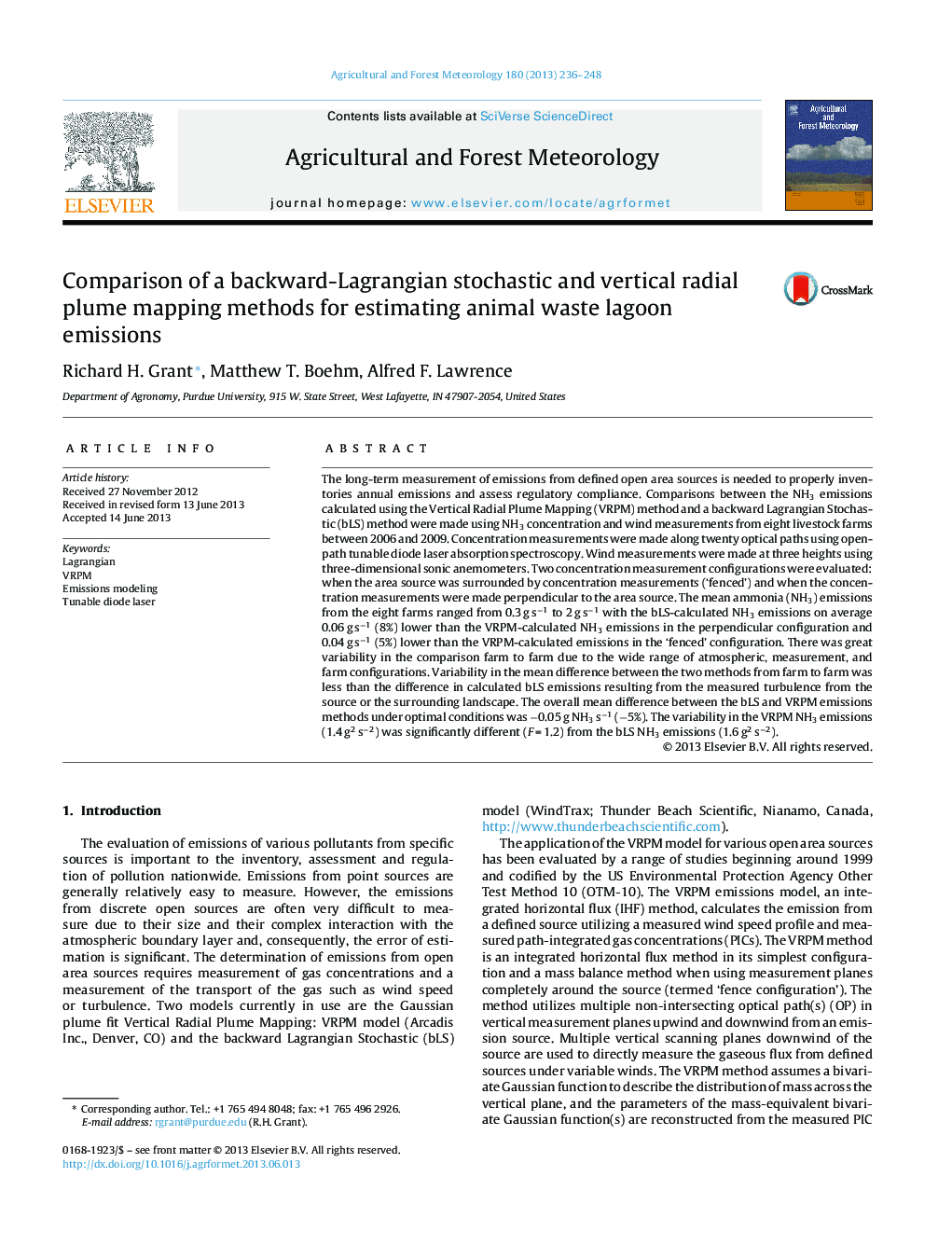| Article ID | Journal | Published Year | Pages | File Type |
|---|---|---|---|---|
| 6537836 | Agricultural and Forest Meteorology | 2013 | 13 Pages |
Abstract
The long-term measurement of emissions from defined open area sources is needed to properly inventories annual emissions and assess regulatory compliance. Comparisons between the NH3 emissions calculated using the Vertical Radial Plume Mapping (VRPM) method and a backward Lagrangian Stochastic (bLS) method were made using NH3 concentration and wind measurements from eight livestock farms between 2006 and 2009. Concentration measurements were made along twenty optical paths using open-path tunable diode laser absorption spectroscopy. Wind measurements were made at three heights using three-dimensional sonic anemometers. Two concentration measurement configurations were evaluated: when the area source was surrounded by concentration measurements ('fenced') and when the concentration measurements were made perpendicular to the area source. The mean ammonia (NH3) emissions from the eight farms ranged from 0.3 g sâ1 to 2 g sâ1 with the bLS-calculated NH3 emissions on average 0.06 g sâ1 (8%) lower than the VRPM-calculated NH3 emissions in the perpendicular configuration and 0.04 g sâ1 (5%) lower than the VRPM-calculated emissions in the 'fenced' configuration. There was great variability in the comparison farm to farm due to the wide range of atmospheric, measurement, and farm configurations. Variability in the mean difference between the two methods from farm to farm was less than the difference in calculated bLS emissions resulting from the measured turbulence from the source or the surrounding landscape. The overall mean difference between the bLS and VRPM emissions methods under optimal conditions was â0.05 g NH3 sâ1 (â5%). The variability in the VRPM NH3 emissions (1.4 g2 sâ2) was significantly different (F = 1.2) from the bLS NH3 emissions (1.6 g2 sâ2).
Related Topics
Physical Sciences and Engineering
Earth and Planetary Sciences
Atmospheric Science
Authors
Richard H. Grant, Matthew T. Boehm, Alfred F. Lawrence,
